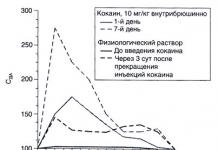Anton Tsugunov
Reading time: 4 minutes
Do you want to line the partitions in your apartment with plasterboard, but it’s a pity to lose precious centimeters that are already missing? Install drywall on unframed walls. This method is even simpler - you don’t have to bother with installing the profile. It will save space and create equally ideal surfaces. Even without extensive experience in repairs, you can cope with this task on your own.
Advantages of leveling gypsum board walls without a frame
This method of installing gypsum board sheets:
- Economical in materials.
- Takes less time.
- Produces less debris and dirt.
- Installation and finishing are completely done by yourself, so you can feel like a pro.
To install gypsum board sheets on the wall, you need to purchase special adhesives. The most popular of them are the Knauf and Volma mixtures. You can also mix gypsum putty with a small amount of PVA glue.
The essence of the frameless method of fastening a gypsum board sheet
Installation of drywall on walls without a frame is carried out using a special compound. They glue the sheet onto base surface. The joints are puttied and reinforced with tape. After priming the wall is ready for finishing– wallpaper is pasted on it, decorative slabs, or painting at your discretion.
Since the sheets themselves are thin, total area the room is almost unaffected. They are convenient to use when leveling walls small rooms: bathroom, storage room, loggia, and in other places where every centimeter of space is important.
Preparing walls for gluing plasterboard sheets
Before you begin installing drywall without a frame, you must.
- It is easier to remove wallpaper with a spatula, after wetting it with water using a sponge or spray bottle. An excellent soaking effect is obtained when using a steam generator.
It is difficult to remove paint from a concrete wall, but it is necessary, otherwise the composition for gluing gypsum boards will either not stick to it or will tear it off from the base. As a result, the sheet will not hold.
- Old plaster is tapped to detect hidden delaminations. Remove damaged and suspicious parts to a solid base.
If the layer of plaster is thick over the entire wall, it makes sense to remove it entirely using a hammer drill or a hammer and chisel. This will help save additional centimeters of usable space.
Additional wall treatment
Proper wall treatment before attaching drywall sheets to an unframed wall is extremely important.
- Inspect the wall itself - repair cracks, fill in holes from old communications, and apply mortar to the places where large pieces of plaster have fallen out.
- If necessary, make recesses for sockets, switches and wiring. Wires and junction boxes must be installed.
The latest generation of wire insulation means you don’t have to pack them in fireproof corrugation, so you just need to attach them to the wall with clamps.
- Remove debris, use a brush or vacuum cleaner to collect dust from the walls and floor.
- To ensure that the glue adheres firmly to the surface of the wall, it is primed evenly. In areas with fresh plaster, the primer is absorbed more strongly, so here it is applied in two or even three layers.
When installed under gypsum board sheets, there remains a poorly ventilated air gap. In rooms with high humidity there are created optimal conditions for the development of various types of rot and fungus. Treating the base wall with an antiseptic will help avoid this danger.
- Since the gypsum board sheet has large dimensions (2500 x 1200 mm), clear a suitable flat area on the floor for working with it.
GCR can be installed only when the wall is completely dry, after all the procedures have been carried out.
Technology of frameless installation of plasterboard sheets
Before gluing drywall to the wall, you need to set general level. By using installation rule and plumb line measure the vertical deviations of the surface. The length of the wall alignment line is marked on the floor and ceiling.
A sheet of gypsum board is cut out onto the entire wall at once. To reduce the amount of work, it is better to buy sheets the height of the room or larger. Then you won’t have to adjust and putty the horizontal joints.
GCR can be attached to walls in two ways.
Attaching the sheet with glue
The fastening technology will differ slightly depending on the degree of curvature of the walls.
If the differences on the wall are less than 4 mm, then adhesive composition Apply evenly to the perimeter of the gypsum board sheet using a notched trowel. The sheet is placed in the chosen place, pressed and leveled by applying a rule to the surface and tapping it rubber mallet, not forgetting to check the building level.
Important! The adhesive solution sets quickly. Experimentally find out what volume needs to be diluted in order to have time to produce it in one go.
A wall with a level difference of up to 2 cm will require thicker glue. It is applied to the surface of a sheet of drywall in cakes about 5 cm high at a distance of 30 cm from each other. Installation is carried out similarly to the method described above.
If the wall has differences of 4 cm or more, it is necessary extra work. In the recesses it is necessary to glue additional beacons from gypsum board scraps. There is another method: fill the desired area with polyurethane foam, and after it dries, cut it at a general level.
Subsequently, the adhesive composition is applied to the dried beacons and directly to the wall. The sheet is pressed against the glue and aligned in all directions.
Fastening the sheet to the wall using polyurethane foam
Covering walls with this method is more labor-intensive, but it will provide greater reliability of fastening, regardless of the curvature of the surface.
- The gypsum board sheet is pressed against the wall. In its corners, and in another 4–6 places, holes are drilled in the wall, making marks. The sheet is moved to the side, and the resulting marks are drilled out and dowels driven into them.
- On the sheet, stepping back from the holes by 10–15 centimeters, glue pieces of the shock absorber (foam rubber, foam rubber). This distance is necessary for free expansion of the foam. The thickness of the sponge depends on the differences on the wall. Ideally they should be the same.
- The sheet is placed against the wall. Screws with wide heads or an attached washer are screwed into the dowels. They also regulate the level, creating a flat surface. The remaining sheets are installed in the same way.
- After checking the rule, a hole is drilled near each self-tapping screw. The tube for pumping polyurethane foam should fit into it without effort. Foam is pumped into the cavity through the hole. It should form a cushion between the wall and the sheet. The amount of foam is determined experimentally in advance. After the foam has hardened, the screws are removed.
Don't rush to finish the wall decorative materials. Adhesive base It sets quickly, but it will take at least a day to dry completely.
A few words about safety precautions
Working with gypsum boards generates quite a lot of dust. Inhaling it will not add health to anyone, so it is better to protect yourself with a respirator. You should also ensure that dust does not penetrate into living spaces by curtaining the openings with a damp cloth.

Drywall is one of the most popular finishing materials due to its many advantages: ease of installation, safety, possibility of use in the most different rooms and a relatively low price. Let's talk about whether it is possible to cover walls with plasterboard without a frame.
Features of the use of gypsum boards
Drywall is used to mask uneven walls and build partitions. At the same time, not only can work with this material experienced builder, but not too much experienced master. Installation is possible on various adhesives and base surfaces.
Important! The advantage of this method over the frame method is that the useful volume of the room is “eaten up” to a much lesser extent. At the same time, labor intensity finishing works is small and can easily be produced independently.
Frame VS frameless method - which is preferable?
To be fair, it must be said that sometimes installing plasterboard sheets on a frame is the only way finishing. Let's try to compare these two fundamentally different methods and determine the scope of their application.
Frame method
For the manufacture of frames, metal profiles or wooden beam. This method is used if additional thermal and sound insulation of the room is needed. They also use installation of sheets on the frame if the walls are uneven and cannot be leveled with plaster.
Frameless method
Installation of drywall on walls without a frame is carried out using an adhesive compound with gypsum or using construction foam and self-tapping screws:
- Gypsum adhesive is preferred for concrete and brick walls.
- Fastening plasterboard sheets with self-tapping screws is used for wooden walls.
Important! There is a limitation on the height of the walls (it should not exceed 3.0 m).
Required Tools
To level the walls without first making a frame, use the following set of tools:
- A 1.5 m long building level is used to control vertical planes.
- Jigsaw - for preparing plasterboard sheets.
- A set of marking tools: pencil, rulers, squares.
- Spatulas different widths for applying the solution.
- Construction grater.
- Paint roller and brush - for applying primer.
- Rubber hammer.
- Electric drill with mixer attachment.
- A screwdriver - if you need to fasten the sheet also with self-tapping screws.
Materials you will need:
- Primer with antiseptic.
- Basic and finishing putty on a gypsum basis.
- Construction foam or special adhesive for drywall.
- A tape made of serpyanka mesh to hide the joints between the sheets.
- Long length self-tapping screws. Their length depends on how smooth the surface is. The depth of penetration of self-tapping screws into the wall is from 50 to 60 mm.
- Foam rubber (optional).
Types of drywall
One of the best is the products of the Knauf company. The company is engaged not only in the production of construction and finishing mixtures, but also drywall with different areas of application:
- Normal - used for rooms with low humidity.
- Moisture resistant - used for bathrooms and toilets. Tile tiles can be installed perfectly on such a surface.
- Fire resistant. Great for the fireplace area, near the stove and/or chimney.
- Fire and moisture resistant. Suitable for finishing walls in attics, lofts or the boiler room of a private house.
Important! Cutting a sheet of drywall is a pleasure. No special devices are needed. A well-sharpened utility knife is sufficient.
Cutting order
In any case, this process will have to be performed, regardless of whether you plan to cover the walls with plasterboard without a frame or with it. The plasterboard sheet is cut in this order:
- Place the sheet on a flat horizontal base.
- Mark the sheet using a ruler or tape measure, draw the necessary lines with a pencil.
- Using a ruler, draw a knife along the outlined line.
- Slide the sheet over the surface and place it along the cut line.
- Press the edge of the sheet and break it.
- Cut the cardboard on the other side of the sheet.
Mixture for installing drywall on a wall without a frame
This composition is produced on a gypsum base with plasticizers, which ensure strength and good adhesion of the solution. Any adhesive mixture for frameless installation must meet the following requirements:
- Minimum setting time.
- Slight shrinkage when drying.
- Homogeneity and plasticity.
- Easy to apply.
Important! Please note that gypsum mixture was not expired, since it has a short shelf life - usually no more than six months. It is not advisable to purchase the mixture in bulk.
The time to use the prepared solution is about half an hour, so it is better to prepare it in small portions. If the mixture begins to set, there is no way to dilute it.
Important! Experts advise buying all materials for covering walls with plasterboard using glue from one manufacturer (the same “Knauf”), as they interact perfectly with each other.
Polyurethane foam
This is a fairly popular material, and its different types have various characteristics. Different foams have different expansion coefficients, so be sure to check their characteristics in advance. There are 2 types of mounting foams:
- One-component, ready to use polyurethane compounds. They are sold in cans.
- Two-component. These mixtures are used by professionals, since their preparation requires special equipment and precise proportions.
The advantages of using polyurethane foams are as follows:
- Good adhesion to a wide variety of materials.
- Resistance of the material to temperature changes.
- Foam is a dielectric - it does not conduct electricity.
- Good sound insulation properties.
- Easy to install, quick drying.
- No toxic substances.
- Fire safety.
- Moisture resistance.
- Small (no more than 5%) shrinkage.
- High strength indicators.
- Good thermal insulation effect.
- Plasticity, elasticity, filling gaps and cracks.
How to cover walls with plasterboard without a frame - installation work
The entire cycle of work when covering walls with plasterboard is divided into several stages.
Preparation
The first stage is high-quality surface preparation:
- If the wall is painted oil paint or enamel, which “can’t be torn off even with your teeth,” make notches across the entire surface to ensure better adhesion. A hammer drill with an attachment or an ax is suitable for this.
- Be sure to seal cracks and cracks in the walls. Fill them with polyurethane foam, and after it hardens, remove the excess with a sharp knife.
Important! For small defects, a cement-sand mortar is also suitable.
- Clean the wall surface from dust using a wide brush or vacuum cleaner.
- Treat the wall with a primer and antiseptic. This not only significantly improves adhesion, but also prevents the development of fungus, mold, and harmful insects. Leave the finished wall to dry completely.
- After the wall has dried, check its verticality using building level or plumb line. If there are significant distortions, the wall will have to be leveled.

Alignment
There are several ways to level walls.
Method 1
To implement it you will need gypsum adhesive and pieces of drywall (kind of beacons):
- The pieces can be square or strip-shaped.
- Their number depends on the degree of unevenness of the wall.
- Having determined the highest and lowest points on the wall, bring the latter to the same level as the first.
- Now all that remains is to accurately draw out the remaining surface.
Important! Sometimes plasterboard overlays are made in 2 layers. The beacons attached to the solution after the solution has hardened serve as a support for the finishing sheets.
Method 2
As in the first method, start leveling by finding the “maximum and minimum” points. Next, start screwing self-tapping screws into the wall at intervals of 20-30 cm so that their heads are at the same level.
Important! In this case, self-tapping screws act as support for the plasterboard sheets. Mount the sheets with adhesive and you will have a perfectly vertical wall.
Installation of drywall on construction foam
This method is suitable for uneven walls. In addition, it makes it possible not to delay finishing work too much.
First, prime and dry the wall well, and then:
- Mark 8-9 points on the sheet where it will be attached to the wall.
- Drill holes in them for self-tapping screws.
- Place the sheet against the wall and make marks on it through the slits.
- Remove the sheet, and using the marks obtained in the wall, drill holes 5-6 cm deep for the dowels.
- Drive dowel plugs into the wall holes.
- Stick with opposite side sheets 12-15 pcs. square pieces of foam rubber 15x15 cm. The thickness of the foam rubber is 1.5-2.0 cm. In case of significant distortions, it is advisable to stick the foam rubber on the wall. The distance of the foam rubber from the dowels is from 10 to 12 cm. The foam pieces in this case serve as shock absorbers.
- Attach the sheet to the wall by tightening the screws through the pre-prepared holes. Constantly check the correctness of fastening using a building level.
- Do the same with all sheets.
- Upon completion of installation, drill a 7-8 mm hole at a distance of 2-3 cm from each of the screws. Pump through the holes into the space between the wall and the plasterboard sheet polyurethane foam.
Important! The foam hardening time in this case is at least 24 hours, since the process takes place without air.
- Surplus construction foam that came out through the holes, carefully cut them off with a knife.
- After the foam has hardened, unscrew the screws. They are no longer needed.
- Reinforce the joints between the sheets with sickle tape, and then treat them with putty. After the putty has dried, treat the joints sandpaper or a mesh made of abrasive material.
- Prime, putty and dry the wall, then clean it so that the surface is smooth.
The wall is ready for decorative finishing!
Video material
As you can see, installing gypsum boards on the wall is not so difficult. And there is no need to call a master to change the geometry of the room or recreate an intricate decorative idea in it.
Drywall has become lately one of the most popular materials for repair work in apartments. Large-area, even and smooth surfaces of the sheets make it possible to eliminate the curvature of the walls in a short time and prepare the room for subsequent finishing. In addition, if gypsum boards are mounted on frame structure, then it becomes possible to additionally insulate the ceiling.
But creating a frame is not possible in all cases, since such a design significantly “steals” usable area premises. Therefore, for owners of city apartments planning renovations, information on how to attach drywall to a wall without profiles is often more useful, so that the loss of space in already cramped conditions is minimal.
There are several methods for attaching drywall in this way. But for any of them, the wall requires some preparation.
Preparatory work
Any work begins with preparing the kit necessary tools and purchasing the necessary materials.
Materials and tools
A. Tools you will need:
- Knife for cutting drywall.
- Building level, plumb line, marking cord, tape measure, long ruler or rule, pencil or marker - for preliminary marking and constant monitoring of the verticality of the surface during the installation of sheets.
- Rubber and regular hammer.
- Spatula or trowel
- Container for mixing glue.
- Screwdriver, electric drill with mixer attachment.
- Roller on long handle and a soft brush.
- Chamfer plane
B. Materials for work:
- Drywall sheets. Depending on the room, ordinary gypsum boards and moisture-resistant gypsum plasterboards can be used, and if a wall near a stove or fireplace is being finished, then fire-resistant gypsum plasterboards will be required. The number of sheets is calculated by taking into account the area of the walls of the room, subtracting from it the areas of windows and doorways, and making a reserve of approximately 15%.
The calculator below will help you quickly and accurately calculate the number of sheets of drywall.
Today, drywall is rightfully recognized as one of the most popular and sought-after materials. This is due to its affordability and undeniable ease of use. It is often used to level floors in the house. Today we will talk about how you can attach drywall to walls, and also get acquainted with all the pros and cons of this common finishing material.

What is it?
Before you begin to study such a finishing material as drywall, it is worth understanding what it is.

Drywall is a finishing material that consists of two layers of cardboard with hard plaster and special fillers inside. It is used for a variety of purposes. For various works sheets with different thicknesses. Plasterboard panels can be laid not only on walls, but also on the floor or ceiling. The main thing is to choose materials of the appropriate category.

Peculiarities
Today in construction and finishing materials stores you can find absolutely any product for any repair work. To level the walls, customers are offered high-quality putties, plasters and other practical compounds. However, many people choose “dry” material for such work - drywall.

Today, the problem of uneven walls is familiar to many. Both owners of private houses and city apartments face it. However, it is quite possible to make the floors even on your own, without involving a team of finishers.

Uneven floors are bad not only because they look unpresentable, but also because many paints cannot be applied to them. finishing materials. These include tiles, most types of paints and wallpapers. On a base with drops and potholes, such coatings do not adhere reliably, and they look very sloppy. Many of the finishing materials even emphasize unevenness on the walls.

In such cases, you cannot do without perfectly flat and smooth drywall. After its installation, the walls acquire a more aesthetic and neat appearance. In addition, sheets of this popular material are extremely easy to process and can be coated with almost any canvas and paint.

Plasterboard sheets are attached to the wall using a special wooden or metal frame. There is also a frameless installation method, which experts consider more complicated.


When choosing one or another installation method, it is worth considering that you need to work with drywall carefully. This is due to its peculiarity, which is fragility and the possibility of crumbling. If you accidentally damage the drywall, it is unlikely that you will be able to restore it to its original appearance. That is why ordinary drywall is not suitable for making, for example, arched structures, since it will simply break if slightly bent.

Another distinctive quality of drywall is its multitasking. It is used not only for leveling different bases, but also for making interesting multi-level ceilings, racks with shelves, niches and cabinets. This once again confirms the unpretentiousness of this material and the ease of working with it.


Pros and cons
Like any other finishing material, drywall has advantages and disadvantages that you should be aware of if you decide to install it on the walls of your home.
First, let's take a look at the list positive qualities plasterboard sheets:
- They are distinguished by a flat and smooth surface, which is why they are chosen for leveling various substrates.
- The advantage of drywall is its thermal conductivity. A room where the walls are lined with this material will always be warm and cozy.
- Drywall recognized environmentally friendly material. It contains no dangerous or harmful substances, so it can be safely used even in decorating children's rooms.
- GKL sheets are fireproof and do not support combustion.


- Another significant advantage of drywall is its vapor permeability. Thanks to this quality, this material is not susceptible to the formation of mold and mildew.
- Often consumers buy drywall because it has affordable price, and is used for a variety of purposes.
- Plasterboard walls can be supplemented various insulation materials(they often prefer penoplex and mineral wool).
- Working with drywall is quite simple. To do this, you do not need to purchase expensive tools.


- Using this finishing material, you can bring to life any bold design ideas. This is why many designers use drywall in their designs.
- Drywall does not require expensive and regular maintenance.
- GLA does not emit an unpleasant chemical odor.
- It is processed without problems. For this you can use almost any materials, from ordinary paper wallpaper to tiles.




- Plasterboard sheets can be installed in any room. This can be not only a dry living room or bedroom, but also a bathroom or kitchen. Of course, for the latter it is necessary to select moisture-resistant fabrics.
- Thanks to gypsum sheets, you can hide unattractive communications and wires in the room.
- With the frame method of attaching drywall, the rough walls do not need to be prepared for a long time and scrupulously using special compounds. It is enough to process them antiseptics to avoid the proliferation of harmful microorganisms.
- Many consumers purchase drywall for renovation because it can be used immediately after purchase, allowing it to sit for 2-3 days without any additional preparation.
- Today, the choice of plasterboard sheets allows you to choose the best option for any conditions.


As you can see, the list of positive qualities of drywall is quite impressive.
However, it also has its weaknesses:
- Ordinary drywall is not recommended for installation in rooms with high level humidity. For such conditions, it is worth choosing exclusively moisture-resistant types of material. However, according to experts, even such drywall wet conditions begins to lose its properties and deteriorate.
- Drywall sheets may begin to crumble, especially when exposed to heavy loads. That's why on plaster walls It is not allowed to hang heavy objects such as large clocks, a hanging sink in the bathroom, lighting fixtures, large paintings and other objects with considerable weight. Otherwise, these things will not stay in place for long, and then they will simply fall off and damage the drywall.


- You need to work with drywall very carefully so as not to damage it. Do not bend this material unless it is arched.
- Drywall on a frame will “eat up” some space in the room, so this method of installing the material will not be suitable for all areas.


How significant the listed disadvantages are - each consumer must decide for himself. But it is worth noting that many problems can be avoided if you choose the right material and strictly follow the instructions when attaching it to the walls.
Materials and tools
If you decide to install drywall on the partitions in your home yourself, then you should stock up on tools and materials.

The following tools will be useful to you:
- special knife for cutting plasterboard sheets;
- special glue (for frameless installation);
- building level, plumb line, special marking cord, tape measure, long ruler (you can take a rule instead), pencil/marker - you will need these tools for marking walls and for competent control of the verticality of surfaces;
- regular and rubber hammers;

- spatula (you can use a trowel instead);
- separate container for mixing the adhesive composition;
- screwdriver;
- perforator;

- self-tapping screws;
- dowels;
- screws;
- electric drill with mixer attachment;

- roller with long handle;
- soft brush;
- plane (needed for cutting chamfers);
- putty (for applying the finishing layer after all work has been completed).

Materials you will need:
- GKL sheets (regular, moisture-resistant or fire-resistant - it all depends on the room in which the sheets are planned to be installed);
- galvanized profile or wooden beam (to form a frame with the appropriate installation method).

Scope of application
Drywall is universal material. It is used in most different conditions and can be easily fixed on various substrates.

You simply cannot do without this material when it comes to a wooden house or a log structure. In such conditions, the walls are almost always uneven and require proper leveling. However, it is worth considering that wooden houses always shrink and plasterboards can only be installed in them after completion this process. Otherwise, the sheets may become damaged or deformed under such conditions.

For installing drywall on walls in wooden houses necessary:
- provide space for installing insulation (if you, of course, plan to additionally insulate the room);
- have free space for laying communication systems.


Leveling walls in wooden houses is not an easy task. IN in this case the best option will become frame installation. However, some owners first attach sheets of plywood or chipboard to boards and bars, and then glue drywall onto them.

Drywall can also be attached to walls with a concrete base. For such surfaces it is not at all necessary to make a complex frame. Drywall can be glued to such bases using special glue. Such adhesives are found very often in stores today. For example, the high-quality composition “Perlfix” is offered by the well-known company Knauf.

Drywall is often used to level brick walls. Here you can also resort to the usual gluing of material without making a frame. In such cases, immediately before installation, it is necessary to find out using a level how much the ceilings are curved, after which any dirt, dust and greasy spots. In addition, the brick wall must be absolutely dry, otherwise sufficient adhesion with plasterboard will not be achieved even when using high-quality glue.

If you want to level walls made of foam blocks, then you should contact frame method installations. This is explained by the softness of such bases. However, some users turn to frameless installation, but before this the foam block must be prepared - finished with primer or plaster.

Aerated concrete walls also often require leveling. In such cases, you can use both frame and frameless installation methods. In the second case it is necessary to process aerated concrete bases deep penetration primer. In such cases, the glue must be selected especially carefully, as in cases with foam block floors. Experts recommend using compounds from Knauf and Volma Montazh.

Drywall can make walls even in adobe houses. Such buildings are full-fledged composites, built from clay, earth, straw and sand. Of course, with such construction materials there is no need to talk about perfectly even partitions. For this reason, they simply require leveling sheets such as plasterboard.

Mounting methods
We have already mentioned above that plasterboard sheets are attached to the walls by making a frame or using a frameless method. The choice of one installation option or another largely depends on the structure and conditions of the room and, of course, the preferences of the owners.

To profile
This option for installing drywall is the most popular. It is quite possible to make it yourself. With this method, gypsum sheets are installed on a pre-prepared frame consisting of metal profiles, fixed along the wall.

It is worth considering some nuances of this common installation method:
- Insulation can be placed between the wall and the profile if necessary. Most often, consumers choose to do this mineral wool, penoplex or polystyrene foam. However, we must not forget that rough walls must be treated with an antiseptic composition before laying the insulating layer.
- In the cavity behind the frame you can hide various engineering communications. It could be water pipes, heating batteries or electrical wiring.
- Do not forget that in rooms with increased level humidity, it is permissible to use only moisture-resistant drywall. Ordinary sheets will not last very long in such conditions.


Installing plasterboard sheets on a frame has a number of advantages:
- with such an installation in the room, additional noise and heat insulation is provided;
- frame installation allows you to level even ugly crooked walls;
- Before installing the frame and fastening the drywall, the rough partitions do not require preparation (it is enough to walk over them with antiseptics).


Let's take a closer look step by step instructions for installing drywall on a frame:
- First you need to take measurements of the walls and make markings on them for installing metal profiles and hangers.
- Marking for the guides should begin from the top profile. In this case, the necessary indentation is made from the ceiling, then a line is drawn and transferred to the floor using a plumb line.
- Vertical profiles must be placed at a distance of at least 60 cm from each other. In this case, it is necessary to ensure that each plasterboard sheet rests on three racks.
- As for the installation of suspensions, here too it is necessary to maintain a certain distance - 60-80 cm will be quite enough.

- After this, you can proceed directly to the installation of the frame. First, you need to secure guide profiles around the perimeter. To screw them to the ceiling and floor, you need to use a hammer drill, dowels and screws.
- At the points marked during measurements you need to attach hangers.
- Bearings should be inserted into the guide profiles and secured with hangers.
- Fasten all parts as securely and tightly as possible, since the durability and strength of the entire structure as a whole will depend on the quality of the frame.

- Before installing plasterboard sheets, it is necessary to strengthen the horizontal guides.
- When the frame is ready, you should proceed to installing plasterboard sheets on it. They must be mounted in a vertical position. To do this, you can use special 25 mm metal screws. But they need to be screwed in such a way that the caps are slightly “recessed” into the drywall.
- After installing all the sheets, the joints between them must be treated with putty using reinforcing tape.
- When the putty is completely dry, the drywall attached to the frame should be completely puttied. After this the surface wall decoration will be perfectly flat and smooth (without any flaws).

According to experts, this installation technology is simpler. However, it is worth considering that such a design will take up part of the space in the room, so in a very small room it is better to use the frameless method, if, of course, the ceilings allow this.
Non-profile designs
Frameless fastening of drywall is also called adhesive fastening, since with it the sheets are fixed to the ceilings using a special adhesive.
When choosing this installation option, you must meet the following conditions:
- there should be no fungus or mold on the rough floors;
- There should also be no crumbling areas;

- walls should not be subject to freezing;
- they must be protected from dampness and excess moisture;
- It is necessary to remove old finishing materials, as well as dust, dirt and any other contaminants from the surface of the walls.

Frameless drywall fasteners can only be used if the curvature of the walls does not exceed 4 cm. Otherwise, it is better to build a profile frame.
You can glue plasterboard to bases in different ways.
The best option must be selected based on the technical condition of the floors:
- The first installation method is designed for smoother surfaces. With it, the plasterboard sheets are fixed directly to the wall using gypsum mounting adhesive. It is transferred to the base along the perimeter (longitudinal lines).
- If the ceilings have uneven surfaces, then it is recommended to glue the drywall onto them using Perlfix glue. It must be applied in portions along the entire length of the back side of the plaster sheet (maintain a distance of 35 cm between the piles of glue), as well as along its perimeter.


Now it’s worth taking a closer look at the instructions for profileless installation of plasterboard sheets:
- First you need to measure the floors and plan the placement of plasterboard slabs.
- Then you need to properly prepare the base surface. If the wall has a porous structure, then it should be covered with a primer mixture.
- Now you need to cut out the gypsum board sheets, since you will need not only whole panels, but also pre-prepared inserts.
- To make a straight cut, it is better to use a sharp construction knife. If you are going to make crooked cuts, then you should use an electric jigsaw.

- Prepare the glue. For this you can use modern gypsum solutions, which freeze long enough.
- If the glue dries too quickly and you want to extend its drying time, then you should add wallpaper adhesive or good old PVA to the diluting water.
- Now you can start gluing the drywall to the walls. Pay attention to the thickness of the adhesive layer. It directly depends on the area of irregularities on the base. If the floors are fairly even, then the mixture can be applied to it immediately.
- To eliminate significant curvature, it is worth installing beacons. They can be constructed from plasterboard strips with a width of 10 cm. These elements must be glued along the entire perimeter in a vertical position, maintaining a step of 40-50 cm.

- The right and left beacons (extreme) should be mounted using a plumb line.
- After this, focusing on the mounting line (or thread) stretched between the outer beacons, you need to install the remaining strips.
- Align the beacons with the rule.
- Plasterboard sheets must be pressed using the rule set in various positions. Tap the panels with a rubber hammer and adjust their position.
- When the glue has dried, the seams between the plasterboard panels must be finished with putty.

Drywall is lifebuoy in matters of wall alignment. Installation of gypsum sheets cannot be called prohibitively difficult and energy-consuming.
To give you a more aesthetically pleasing and reliable design, You should consider the following tips and recommendations from professionals:
- It is permissible to install plasterboard boards indoors only after installation floor coverings. Also, by the time the floors in the room are leveled, all issues regarding the laying of communications and heating systems must be resolved.
- When gluing drywall (using the frameless method), try to avoid cross-shaped joints. It is better to lay out the sheets with an offset.
- Pay attention to the width of the gaps between the gypsum sheets during profileless installation. This indicator should be from 5 to 7 mm, the gap from the floor - 7-10 mm, and from the ceiling - 3-5 mm.
- In order for drywall to adhere securely to the floors, you need to pay attention to their technical condition. There should be no crumbling or falling apart areas in the walls.

- At frame method installation, it is recommended to create a chamfer on the cut material (it is needed for more high-quality sealing all finishing seams). To do this, it is recommended to use a special edge plane.
- It is recommended to prepare all tools and materials before starting installation work. This will allow you to work without being distracted and without wasting time on unnecessary actions.
- Adhesive compositions must be diluted based on the instructions. It must be printed on the packaging.
- Do not over-tighten drywall fasteners as this may warp the fragile material.
- To work with drywall you will need a level. Of course, you can choose the tool yourself that is more convenient for you to work with, but experts advise turning to laser devices.

- Pay attention to temperature regime during installation work. The recommended temperature is +10 degrees. If the room is noticeably cooler, then you should take care of additional heating systems in advance.
- It is recommended to install plasterboard sheets on the walls not immediately after purchase, but after they have been in your home for 2-3 days in dry and warm conditions.
Anyone who has thought about repairing walls or ceilings has heard of drywall. It is usually used to level curved surfaces, create interior partitions And various designs. However, everyone believes that for work it is necessary to create a special structure from metal profiles. It is actually possible to attach drywall to walls without framing, but this is not possible in all situations.
If possible, then you need to abandon creating a frame in favor of other methods of attaching drywall. The selection of guides, marking the wall for them, their fixation and other aspects of working with profiles cause the main difficulties when repairing a wall using plasterboard.
Visual process of attaching gypsum boards to glue
I would like to avoid using guides if possible. However, this is not always the case. In what situations can you reduce the amount of work by not creating the sheathing?
- If the walls are smooth. A curvature of 2 cm is allowed, because if it is greater, it will not be possible to level the surface without creating a sheathing. We will consider the option with good walls that do not need alignment.
- No communications. If you need to hide wiring, meters or other communication elements, then you need a frame. When walls are covered with plasterboard without a frame, the sheets are fastened in such a way that there are no gaps left for anything.
If both points coincide, it makes sense to think about frameless method gypsum board fastenings. Not only time is saved, but also space in the room, because installing a profile steals at least 5 centimeters.
The ideal situation would be when the house is level wooden walls. Then you can attachdrywall without frame with self-tapping screws, which fit into the tree very easily.
Preparatory work
When it comes to the frameless method of attaching drywall, we consider the option with a special adhesive mixture. This mixture is applied to a sheet, which is attached to the wall with its help. Therefore, the wall surface must be carefully prepared.

These four steps will ensure that wall cladding with plasterboard without a frame will be as effective as possible. TO further work you need to start only after the primer has completely dried.
Installing drywall on a wall without a frame is possible if a high-quality adhesive mixture is used. It is best to buy dry mixtures that are diluted with water. In this form they can be stored longer and cannot be used immediately. It is necessary to choose gypsum-based glue, because it is with the help of this mixture that drywall is most firmly attached to the wall.
Usually the Knauf-Perlfix adhesive is used, but you can choose another mixture that has these qualities:

In order for the installation of drywall on walls without a frame to be successful, you need to mix the adhesive according to the instructions on the package. It is also worth considering that the mixture must be worked out within 30 minutes, so there is no need to try to use the whole bag at once.
To mix the glue, it is best to use a drill with special nozzle mixer.
When the solution is mixed to the consistency of very thick sour cream, it can be applied. Someone puts it on the wall, but it's not very correct. It is best to spread the adhesive composition on back side plasterboard sheet. This way the material will spread evenly over the surface and all of it will be used. It makes sense to apply glue to the wall if the work is done independently (so as not to make the gypsum board even heavier).
When finishing walls with plasterboard without a frame, it is very important to apply the solution in an even layer so as not to create curvature on the wall. Therefore, each time you need to take the same amount of solution onto a trowel for application to a sheet of drywall. A construction bucket can be used for this purpose. Then it will be possible to apply the glue as evenly as possible.
 Priming, mixing glue and applying it to plasterboard
Priming, mixing glue and applying it to plasterboard The solution is applied to the sheet in heaps at a distance of 30-50 cm from each other. You need to place the adhesive around the perimeter, and then another strip along the sheet in the center. You cannot lift the leaf alone, because it has become too heavy for this. Such attempts can lead to the drywall simply cracking.
The sheet is applied to the wall and pressed lightly. There is no need to press too hard in one place, because then the gypsum board will not lie flat. The sheet should not be rested on the floor, but on pegs or drywall scraps. It is necessary to leave a gap of about 1 cm with the floor. The same indentations must be made from the ceiling and side walls. Between the sheets themselves, a gap of 1-2 mm is quite enough. This is done so that in the event of slight deformation, the drywall has room to expand and does not bend.
 The evenness of each sheet is checked with a level
The evenness of each sheet is checked with a level Before covering the walls with plasterboard without a frame, you will need to acquire a long level. With its help you can always determine how evenly the gypsum boards are laid.
The protruding areas are carefully tapped with a rubber hammer to level the surface. After this, the presence of curvature is determined using a level, not only horizontally and vertically, but also diagonally.
The remaining sheets are installed in the same way and aligned with the first one. Sheets should be laid according to the principle brickwork, performing the so-called suture dressing.
Method using self-tapping screws
You can carry out work without using adhesives using only self-tapping screws. This procedure can be carried out without preliminary preparation surfaces. Fastening gypsum boards to a wall without a frame with self-tapping screws can only be carried out if perfect wall, which does not need alignment.
IN this method The material from which the wall is made plays an important role. It can be concrete, brick, made of foam blocks, etc. If the screws screw in easily, then you can simply lean the drywall against the wall and immediately attach it. If the screw does not go into the surface, then you will have to resort to a trick.
You can safely attach drywall to brick wall without frame using self-tapping screws. The surface must be flat, which means the sheets can be screwed directly to the wall without additional preparation. It is difficult to screw a screw into a brick, but it is possible. You just have to put in a little effort.
Self-tapping screws with foam
 WITH concrete base or any other type into which the screws cannot be screwed in, you can attach drywall to walls without a frame using self-tapping screws only using polyurethane foam. For this purpose, the sheet is attached to work surface and several holes are drilled in it along with the wall. 10-15 holes should be evenly distributed throughout the entire sheet.
WITH concrete base or any other type into which the screws cannot be screwed in, you can attach drywall to walls without a frame using self-tapping screws only using polyurethane foam. For this purpose, the sheet is attached to work surface and several holes are drilled in it along with the wall. 10-15 holes should be evenly distributed throughout the entire sheet.
Dowels are hammered into the wall, and then the gypsum board is mounted on self-tapping screws. You don’t need to screw them in all the way, but leave a small gap of 1-2 cm between the sheet and the wall. The entire wall is mounted in this way, and then it is leveled to one level. At the same time, you can cover small differences on the surface.
Now all over flat surface holes are made in the drywall with a drill of such a diameter that the spout of the nozzle tube from a cylinder with polyurethane foam fits into them. About 15-25 holes are made per sheet, which are evenly distributed over its entire surface. You need to retreat 10-15 centimeters from the edges.
 The protruding foam is then carefully cut off with a knife.
The protruding foam is then carefully cut off with a knife. Before attaching drywall to a wall without a frame using this method, you will need to buy low-expanding foam. Otherwise, it will inflate greatly and warp the drywall. Foam is blown into the holes made in a small amount. It will expand and serve as a reliable fastening for the drywall to the wall.
It must be remembered that, regardless of the chosen fastening method, you will need to take care of sealing the seams using putty and reinforcing tape.

















